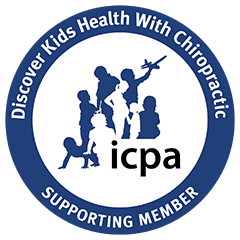The practice of swaddling newborns was used for thousands of years and quite popular until the 1700’s when it was slowly abandoned as many cultures considered it to be old fashioned or barbaric. However, it has remained popular in Europe and there now appears to be a resurgence of the practice in North America, especially among those in the holistic movement. Every decision a new parent makes comes with some apprehension; this one should be a little easier with more information.
What is Swaddling?
The purpose of swaddling newborns is to calm the infant and promote sleeping. This technique has often joined in the traditional soothing techniques of nursing, massage, skin-on-skin contact and baby carrying.
Patricia Hughes, MD, notes on the website More4kids.com that swaddled babies will cry less, “The movements of this arms and legs cause the baby to startle. This is upsetting to the baby and causes over stimulation. When they are over stimulated, newborns cry in an attempt to block out the stimuli. When they are swaddled, the jerky arm and leg movements are kept to a minimum, resulting in less crying.”
Another benefit noted by Dr. Hughes is that swaddled babies are less likely to scratch their faces with their fast growing nails.
Holistic medical physicians Lauren Feder, MD, author of Natural Baby and Childcare, and Randall Neustaedter, OMD, author of The Holistic Baby Guide, both recommend the practice of swaddling in their books.
Why Consider Swaddling Newborns
In his book, The Happiest Baby on the Block, pediatrician, Harvey Karp, M.D., suggests that a newborn needs the imitation of the womb in their first three months. The easiest way to get an infant to sleep is by re-creating the sensation of being in the womb. This is accomplished with the “five S’s” which are: swaddling; the side or stomach position; the shushing sound; a swinging motion; and sucking.
Is Swaddling Safe?
Bradley Thach, MD, addresses the issue of safety with the article, Does Swaddling Decrease or Increase the Risk for Sudden Infant Death Syndrome? In his research he determined the following: “Fortunately in the present study, as noted previously, swaddling does not appear to impair sub-cortical arousals that are essential for adequate pulmonary function and appear to be the primary mechanism in terminating obstructive apnea in infants.”
In an extensive review, Dr. Karp, in his article Swaddling: Boosts Baby Sleep, Stops Colic and Reduces Infant Risks, addresses the concern of swaddling increasing or decreasing the possibility of SIDS or suffocation. He notes that two studies have shown that babies who sleep on their back and are swaddled have a 33% less risk of SIDS than unwrapped back-sleeping babies.
He suggests that swaddling might actually reduce SIDS and accidental suffocation due to the following benefits:
- Boost baby sleep so parents are not tempted to place baby in the dangerous tummy sleep position
- Boost baby sleep so parents aren’t tempted to bring baby into the adult bed. Parent’s profound slumber could be hazardous if they fall deeply asleep while holding their baby, especially if they sleep in a dangerous location (e.g. couches or beds)
- Keep babies from accidentally rolling onto the stomach. Babies who always back sleep – but accidental roll to the stomach – have an 8-37 times increased SIDS risk swaddled babies are less able to roll onto stomach
- Promote breastfeeding. Swaddling reduces infant crying and boosts sleep, factors known to lead to early cessation from depression, exhaustion, lack of confidence in milk and reduced family/physician support.
Another possible swaddling concern is its potential effect on nursing.
This appears not to be an issue. In fact, the baby being calmer may enhance breastfeeding and improve maternal wellbeing.
Hip dysplasia has also been suggested as a potential negative result of swaddling. But, the International Hip Dysplasia Institute states it’s safe. When swaddling be sure that the hips are positioned in slight flexion (slightly bent) and abduction (away from the body). As long as the baby can bend their legs and move their lower extremities, swaddling may actually benefit the infant.
Dr. Karp even addresses the issue of Shaken Baby Syndrome (SBS), sharing that the number one reason for SBS is infant crying. He refers to one report which states that 89% of parents who shook their babies visited a doctor prior to assaulting their babies seeking advice to calm their infant. He comments that if maternal wellbeing was improved, it may reduce possible stressors leading to SBS.
What to Know
When swaddling infants it’s important to remember the following:
- Never place a swaddled infant on their stomach.
- Do not swaddle too tight. This may limit heart function, overheat the baby or overly restrict movement of the extremities.
- Do not swaddle if the infant is ill or coughing. For example, viral pneumonia, cold or flu, feverish, etc.
- Do not flatten (extend) the hips.
How to: Swaddling Newborns
- Place a blanket flat on a level surface.
- Fold one of the corners down.
- Place baby on their back, neck along the fold.
- Place the arms to their sides. If the infant prefers, let them hold them folded over their chest. This most closely resembles their position in the womb.
- Lift the left corner of the blanket over the right arm and chest. Tuck it behind their back on the left side.
- Then lift the bottom corner over the feet and body. Place over the chest (remember to allow flexion and abduction of the hips).
- Lift the right corner and wrap it over baby’s left arm and chest. Tuck it as far as you can around the back on their right side.
- Both arms should be wrapped.
- Always keep baby’s head and face exposed.
- Make sure the blanket is not too tight. Two fingers should be able to fit under each fold.
Final Considerations
The issue of swaddling has created divided opinions. Most of these concerns are based on a fear of uninformed parents making mistakes.
The Registered Nurses Association of Ontario has the following concerns
- Swaddled babies placed on their stomach may increase the risk of SIDS.
- There are risks of overheating or the blanket suffocating the infant.
- Swaddling may lead to hip abnormalities.
Each of these concerns has been addressed.
When making a choice on swaddling newborns, consider these statements:
- “Infants sleep with fewer awakenings when swaddled, and swaddling may help sleeping infants remain on their backs, say researchers at Washington University School of Medicine in St. Louis.”
- “Now we have scientific evidence to support the age old belief that swaddled infants sleep better than un-swaddled infants. It helps babies stay asleep and so may help parents keep babies sleeping in the safer back position.” Claudia Gerard, MD, Washington University School of Medicine
- “If your baby startles easily, his child quivers a lot, and his arms and legs seem trembly, swaddle your newborn in a blanket, which contains and helps to organize these jerky muscle movements.” William Sears, MD, The Baby Book
- “The long term effect of longer REM sleep duration in swaddled infants is unclear but may be beneficial. It has been suggested that REM sleep directs early brain maturation through control of neural activity.” Pediatrics
- “Swaddling is soothing to baby because it simulates the feeling of being in the womb. She feels warm, secure and comforted.” Laura Alexander, maternal- child health nurse and parent educator at California Pacific Medical Center in San Francisco
The Chiropractic Factor
Your Family Wellness Chiropractor would be pleased to demonstrate proper swaddling techniques. In addition, ask to be shown how to properly lift and diaper your infant to protect their growing spine.
Learn more about the benefits of chiropractic care and the benefits of making it part of your family’s wellness lifestyle. Click to schedule a complimentary consultation with the Body & Balance practitioners today.
RESOURCES: DR. CLAUDIA ANRIG-THE WELLNESS FAMILY



